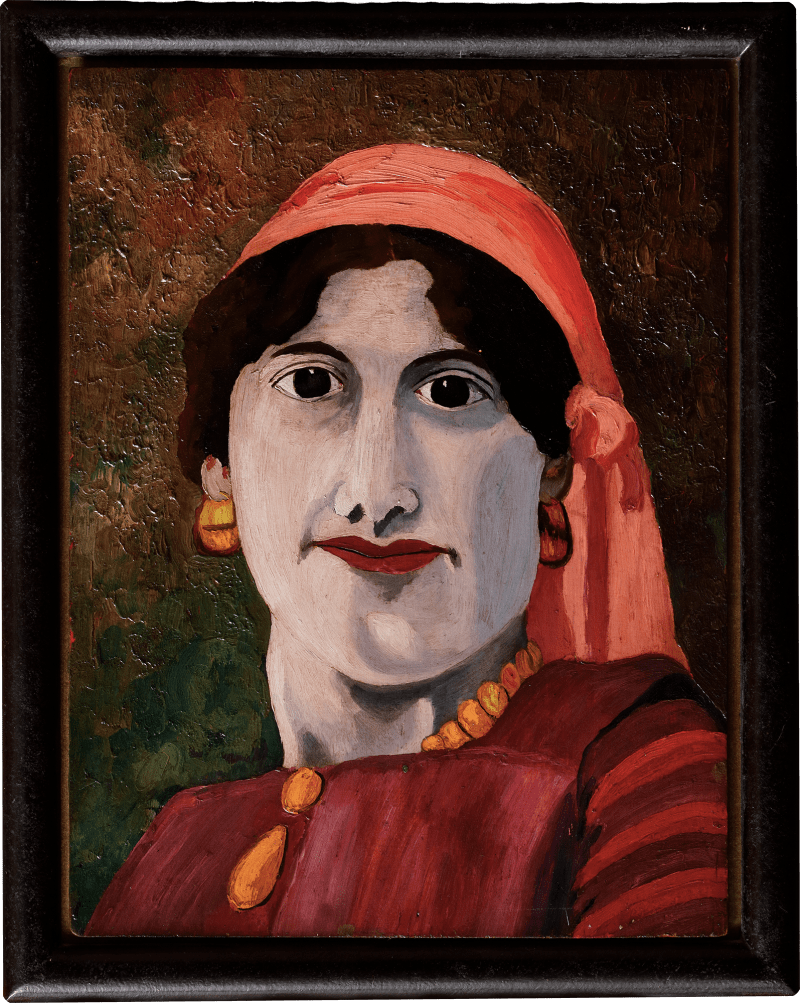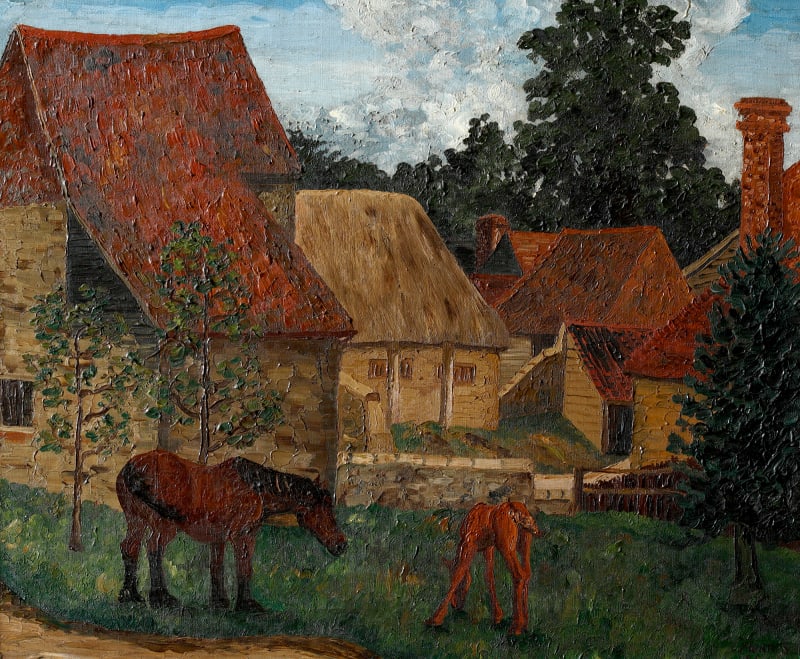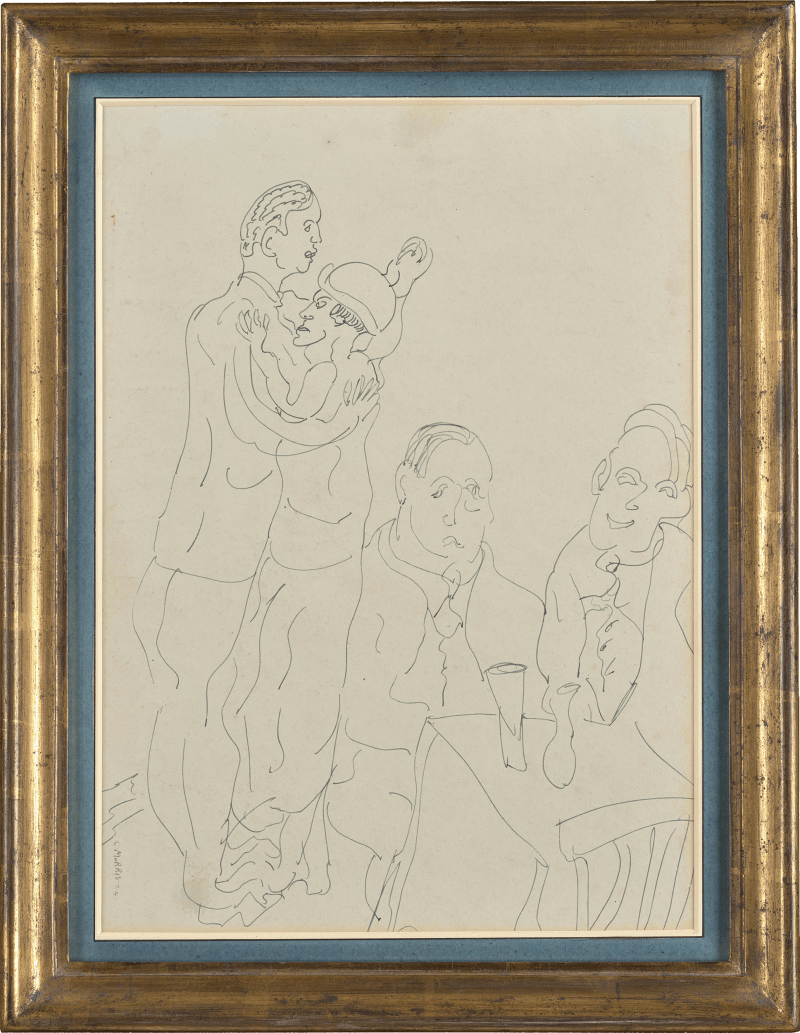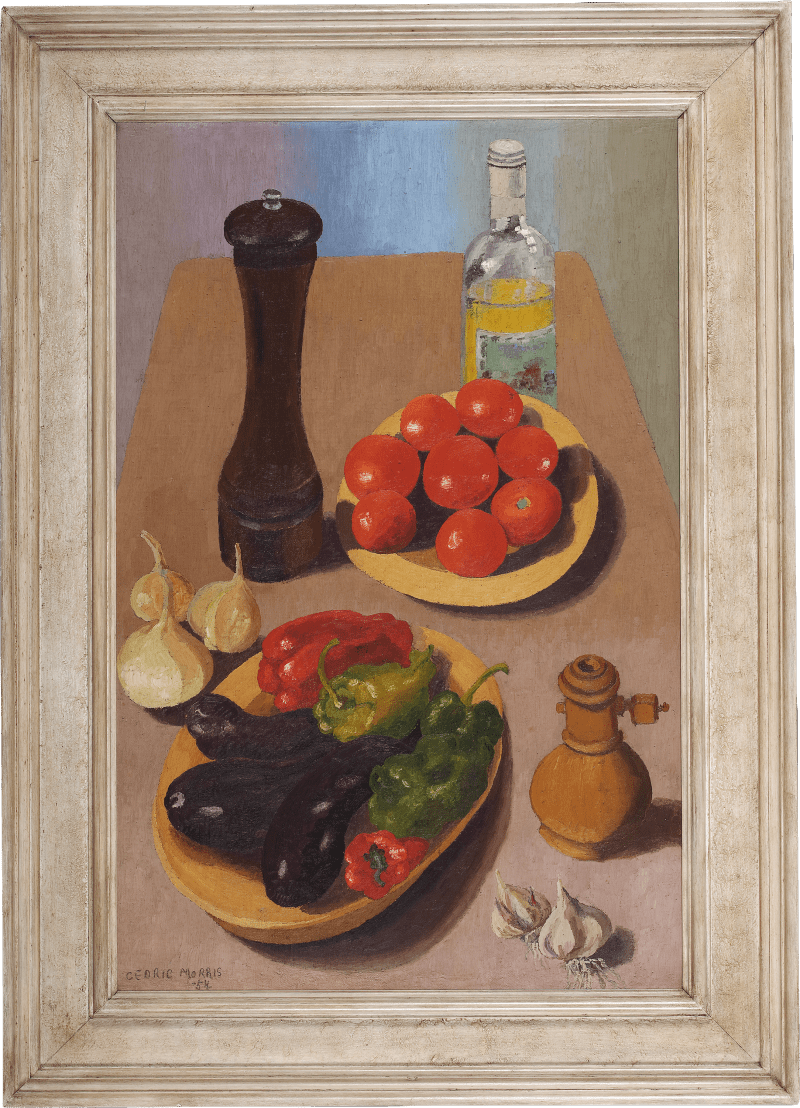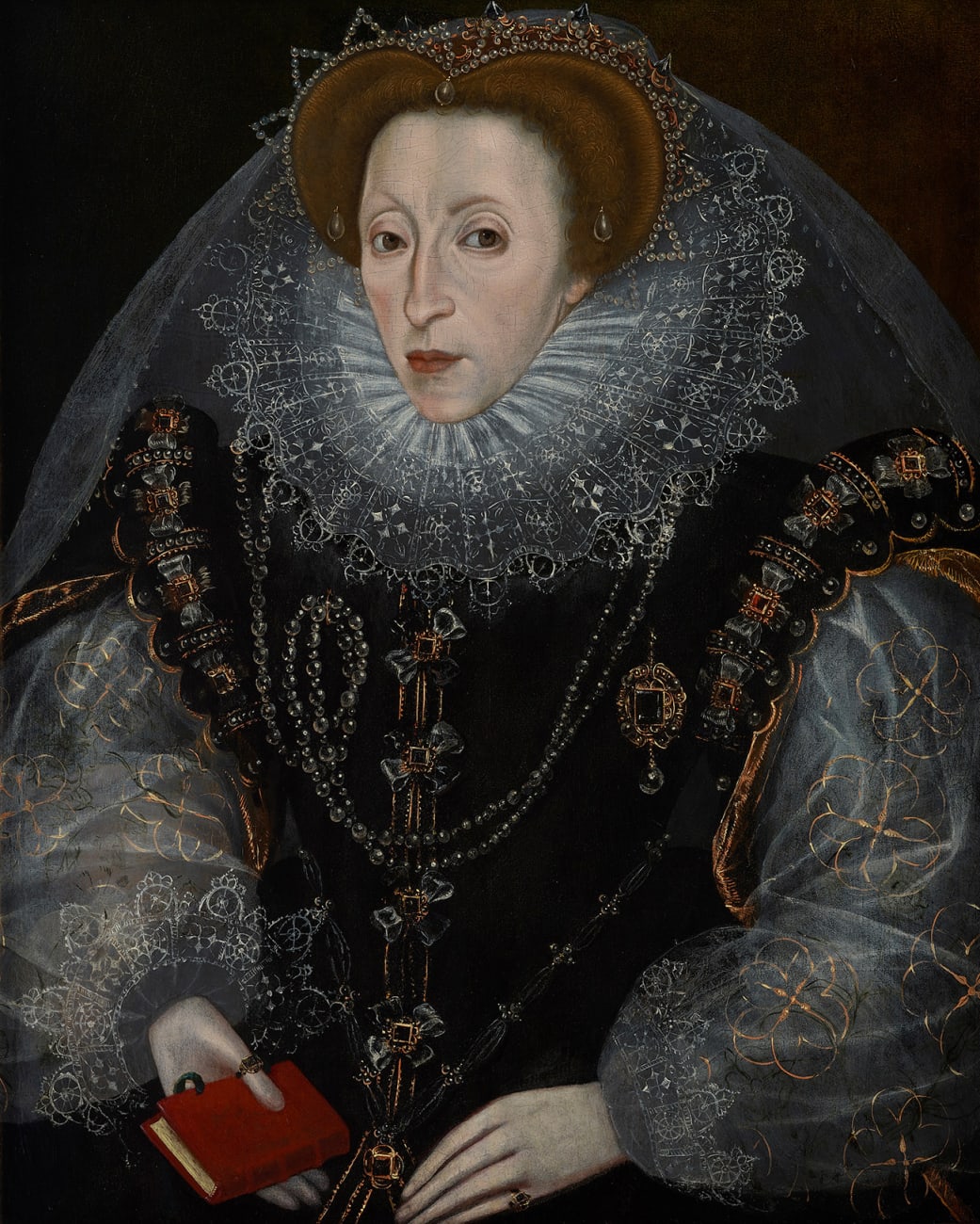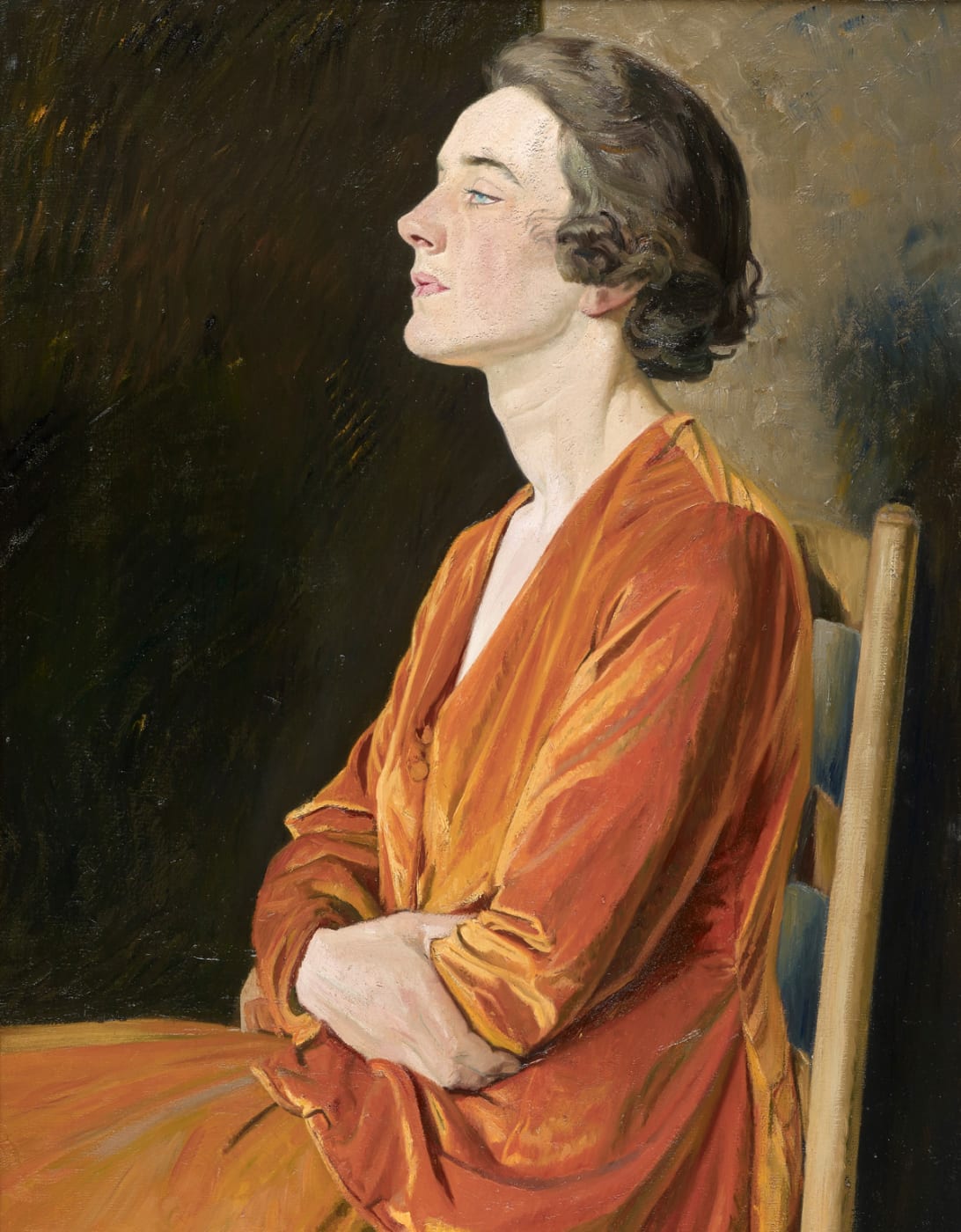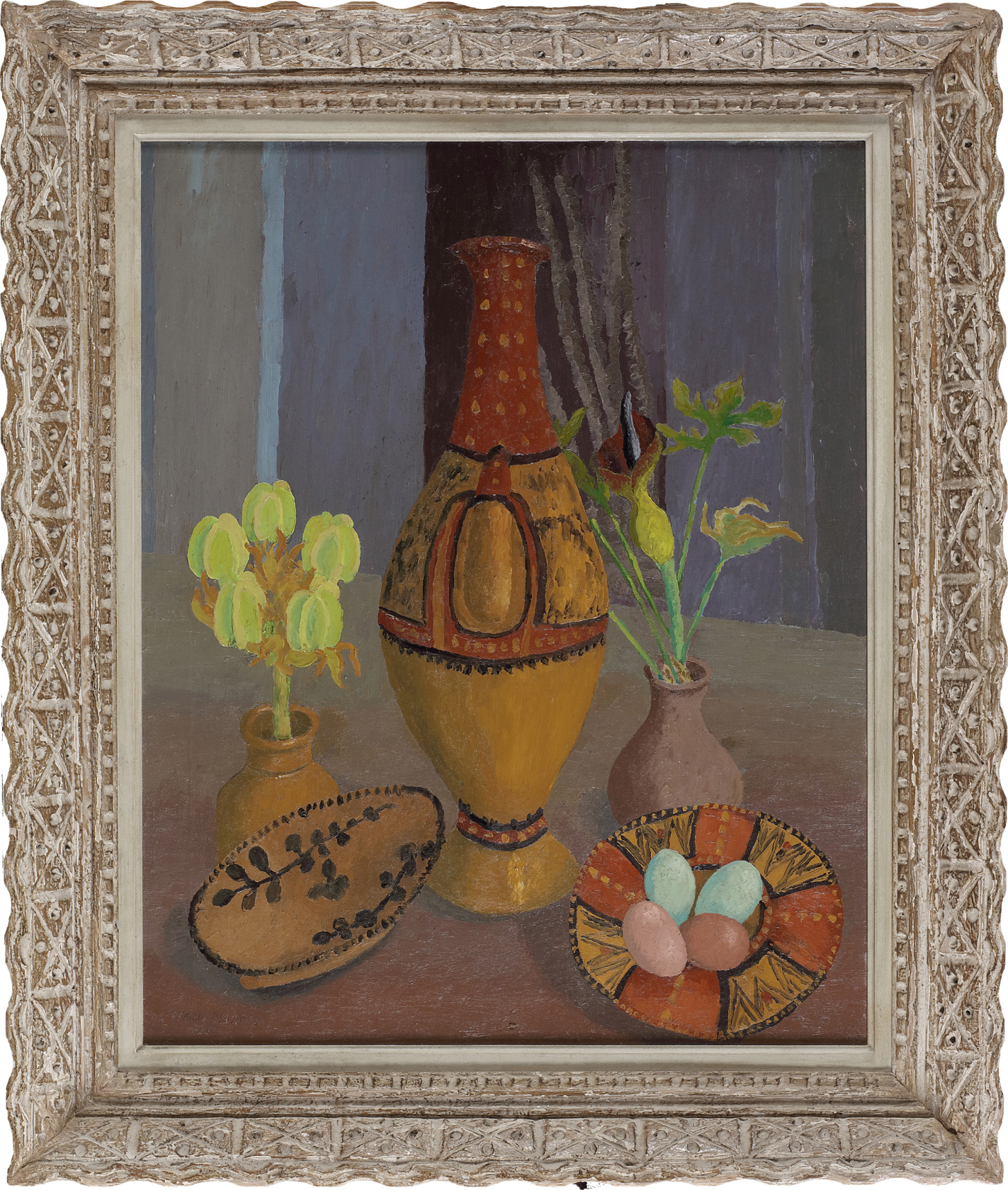
Cedric Morris
(1889-1982) Still Life with Vases and FlowersProvenance
Sworders, London, 22 October 2019, lot 35;
Philip Mould Gallery, London, acquired from the above;
Exhibitions
This composition reflects Cedric Morris’ interest in plants at every stage of life, from bud to decay. The seedhead of a crown imperial fritillary – the dried remains of a once vibrant bloom – is rendered with the same poise and attention as the bold, sculptural form of the Arum Lily. For Morris, the beauty of plants was not limited to their fleeting moments of bloom, he was fascinated by their full cycle from growth to decomposition and renewal.
The crown imperial fritillary appears often in Morris’s floral compositions, but it was the Fritillaria Acmopetala that held his particular affection. “This is my favourite fritillaria,” he wrote in his gardening papers, “It has an aristocratic elegance & aloofness such as one finds in a few plants.”[1] Morris was always on the lookout for fritillaries during his plant-hunting expeditions abroad, from Portugal to Morocco, seeking new varieties to introduce to his beloved garden at Benton End.
The present work, painted in...
This composition reflects Cedric Morris’ interest in plants at every stage of life, from bud to decay. The seedhead of a crown imperial fritillary – the dried remains of a once vibrant bloom – is rendered with the same poise and attention as the bold, sculptural form of the Arum Lily. For Morris, the beauty of plants was not limited to their fleeting moments of bloom, he was fascinated by their full cycle from growth to decomposition and renewal.
The crown imperial fritillary appears often in Morris’s floral compositions, but it was the Fritillaria Acmopetala that held his particular affection. “This is my favourite fritillaria,” he wrote in his gardening papers, “It has an aristocratic elegance & aloofness such as one finds in a few plants.”[1] Morris was always on the lookout for fritillaries during his plant-hunting expeditions abroad, from Portugal to Morocco, seeking new varieties to introduce to his beloved garden at Benton End.
The present work, painted in 1970 demonstrates how even in his later years Morris was unfaltering in his faithfulness to direct observation combined with horticultural accuracy. Throughout the 1970s Morris continued to exhibit his work with solo shows staged in 1975, 1978, and 1979. Two further exhibitions were staged in 1980 and 1981 and in 1980 the Tate acquired three works by Morris for their permanent collection: a portrait of Lucian Freud, a double portrait of David and Barbara Carr, and Iris Seedlings.
[1] Cedric Morris, Gardening Papers, TGA 8317.4.1.2.

